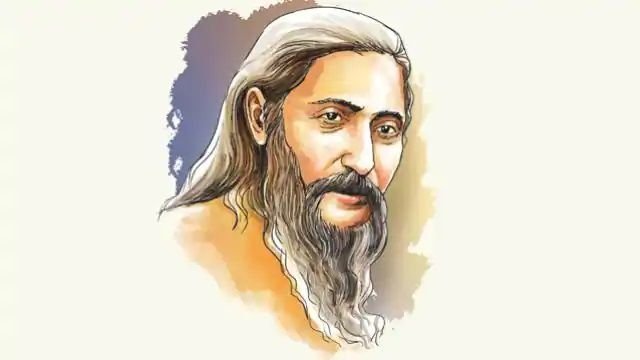Existentialism in Modern Hindi Poetry: A Reflection on Life, Identity, and Meaning

Existentialism, as a philosophical movement, delves into the fundamental questions of human existence, freedom, alienation, and the search for meaning in an often indifferent or absurd world. Though primarily associated with Western thinkers like Jean-Paul Sartre, Albert Camus, and Friedrich Nietzsche, existentialist ideas have found a deep resonance in modern Hindi poetry. The 20th and 21st centuries, marked by rapid industrialization, political turmoil, and societal transformation, have given rise to a poetic voice that reflects the existential crises of individuals navigating a world fraught with uncertainty. Modern Hindi poets have captured these themes through introspection, isolation, identity struggles, and the burden of personal choice, making existentialism a significant undercurrent in contemporary Hindi literature.
The roots of existentialism In Hindi poetry can be traced back to early modernist poets like Suryakant Tripathi ‘Nirala,’ who, despite being associated with the Chhayavad movement, often explored themes of individual suffering, social alienation, and existential despair. However, it was in the post-independence era, particularly during the 1950s and 60s, that existentialism became a dominant theme in Hindi poetry. Poets like Gajanan Madhav Muktibodh, Agyeya (Sachchidananda Hirananda Vatsyayan), and Shamsher Bahadur Singh infused their works with a deep sense of existential questioning, reflecting the growing anxieties of a society undergoing dramatic cultural and political shifts. These poets, influenced by global existentialist thought as well as their own lived experiences, crafted verses that questioned the nature of reality, the role of the individual in a fractured society, and the ultimate meaning (or meaninglessness) of life itself.
One of the most striking elements of existentialism in modern Hindi poetry is the theme of alienation and loneliness. In an increasingly mechanized and impersonal world, the individual often finds themselves isolated, not only from society but also from their own self. This sense of detachment is evident in Muktibodh’s “अंधेरे में”, where the poet’s persona undergoes a nightmarish existential journey, grappling with political and personal disillusionment. The poem is a powerful representation of how modern existence often feels fragmented, disorienting, and devoid of genuine connection. Similarly, Agyeya’s poems frequently explore the internal conflicts of the self, depicting the struggle of an individual caught between societal expectations and personal freedom. His poetry often echoes the existentialist idea that human beings are condemned to make choices without any inherent guide to right or wrong.
Another critical aspect of existentialism in Hindi poetry is the absurdity of existence. Poets use paradoxes, contradictions, and surreal imagery to highlight the unpredictability and sometimes absurd nature of life. Raghuvir Sahay’s works often showcase this existential absurdity, where daily life is depicted as a series of meaningless actions, devoid of deeper purpose. The recurring theme in his poetry is that of the common man, trapped in a cycle of routine, unable to break free from societal structures, yet painfully aware of their futility. This aligns with Camus’ concept of the “absurd man,” who recognizes the meaninglessness of life but continues to engage with it nonetheless.
The Idea of freedom and personal choice also plays a crucial role in existentialist Hindi poetry. Existentialism posits that individuals are free to define their own existence, yet this freedom comes with an overwhelming sense of responsibility and anxiety. Kunwar Narayan’s poetry often delves into this paradox of freedom, questioning whether choices truly lead to liberation or only deepen the burden of existence. His work suggests that while individuals may seek meaning in relationships, art, or political engagement, they are ultimately alone in their quest, a realization that can be both liberating and terrifying.
Additionally, existentialism in Hindi poetry is deeply intertwined with political and social realities. The post-independence period, marked by both hope and disillusionment, saw poets expressing their existential concerns through critiques of nationalism, democracy, and social justice. Many poets who had once been idealistic about political change later became deeply skeptical, reflecting a shift from collective optimism to individual despair. This is particularly evident in the works of Muktibodh, whose poetry transitions from a progressive, leftist perspective to a darker, more existential reflection on betrayal, power, and the individual’s helplessness in the face of systemic oppression.
In contemporary Hindi poetry, existentialist themes continue to evolve, influenced by urban alienation, technological advancements, and global crises. Today’s poets experiment with free verse, fragmented narratives, and ambiguous imagery to depict the mental and emotional dissonance experienced in modern life. The rise of digital communication, the decline of deep human connections, and the pressures of consumerism have only intensified the existential struggles portrayed in Hindi poetry. Many modern poets address questions of identity, existence, and the fear of an uncertain future, making existentialism more relevant than ever.
In conclusion, existentialism in modern Hindi poetry is not merely a philosophical abstraction but a lived reality, articulated through deeply personal and socially aware verses. Whether through the lens of alienation, absurdity, or the search for meaning, Hindi poets have continuously engaged with existentialist themes, shaping a literary tradition that resonates with both individual and collective experiences. As society progresses into even more complex and unpredictable times, Hindi poetry remains a vital space for existential reflection, capturing the anxieties, hopes, and contradictions of human existence in profound and evocative ways.
Existentialism in Hindi poetry discusses issues of human life, quest for meaning, and self-realization, with its importance gaining more significance in the Nayi Kavita (New Poetry) movement during the mid-20th century. Poets such as Gajanan Madhav Muktibodh discussed existential conflicts in their poetry, and his renowned poem “Andhere Mein” was an expression of the inner conflict of an individual seeking to know himself. Agyeya, a notable poet in his own right, focused on individual freedom and self-consciousness, with his novel “Shekhar: Ek Jeevani” commonly interpreted through the lens of existentialism. Harivansh Rai Bachchan’s “Madhushala” employed symbolic imagery to broach subjects of life, death, and the fleeting nature of life. Modern poet Mohan Rana introduces existential topics into his work as well, focusing on time, memory, and identity. Critical studies such as Dr. Ramvilas Sharma’s “Nayi Kavita aur Astitvavad” examine the influence of existentialist philosophy on Hindi poetry. Hindi poetry, despite being influenced by international existentialist thought, has a distinctive cultural and philosophical view, and so it remains a fertile ground for research.
“Poetry, for me, has always been a space to explore fleeting moments and the hidden weight they carry. I wrote this poem, in an attempt to capture the delicate yet intense experiences of existence—those moments that seem light on the surface but hold deeper existential reflections underneath.”
” जैसे कुछ तो है जो उसी एक क्षण में पलता हैं
उसी एक क्षण में जहाँ हल्की बूंद का निगलना है ,
हल्का कंठ का सरकना है..
जहाँ हल्की आँखें और हल्का ध्यान है..
हल्का बीज और हल्का पौधा है!
एक पौधा…..
पौधा जिसे हल्की मरम्मत चाहिए
पौधा जिसे हल्की समझ हैं, उसे समझ हैं
कि हल्का झरना मेरे बालों के लिए हैं! “
ये सारा कुछ मैंने हल्का हल्का भुना हैं
तेज़ आंच पर
या शायद
तेज़ नींद के दौरान!
This poem deeply reflects the theme of existentialism. The poem captures fleeting moments and searches for meaning within them, which aligns with existentialist thought. Let’s analyze it in detail:
- Transience and the Impermanence of Life
“Like something is being brought up in that very moment…”—This line speaks to the transient nature of life. The fact that something comes into being in an instant and may also fade away in it is in line with existentialist thought.
“The light swallowing of a drop, the slight movement of the throat…”—Such small, everyday moments highlight how life is brief. Existentialism tends to concentrate on the fact that such small, what seem to be meaningless, instances make up life, but humanity strives to create meaning in them.
- Absurdity and Meaning-Making
“A plant… a plant in need of delicate fixing…”—Here, the plant may be equated to life, development, or man himself. That it requires “gentle fixing” implies that the speaker acknowledges sensitivity and demands an ongoing revision that mirrors the existent dilemma in finding significance amidst an unfriendly universe.
“The plant that knows, it knows the light rain is for my hair!”—Here, there’s a recognition of perception and knowing, but without final truth. The plant “knowing” something little and particular implies that meaning is personal and subjective, which fits with existentialist philosophy.
- Conflict Between Consciousness and Unconsciousness
“I have toasted all this lightly at high temperatures…”—This may metaphorically represent the pressure of life, where even the smallest moments seem to be being sculpted under high pressure.
“Or maybe in deep sleep!”—The juxtaposition of wakefulness (consciousness) and sleep (unconsciousness) mirrors existentialist notions of consciousness, self-consciousness, and the absurdity of life. The ambiguity of whether things occur in wakefulness or sleep implies an existential questioning of reality and perception.
Conclusion
This poem eloquently summarizes existentialist themes—the transience of life, the pursuit of meaning in mundane moments, the futility of life, and the conflict between consciousness and forgetfulness. The employment of quiet imagery and iteration of “light” (हल्का) underlines how life is lived in fragile, almost elusive manners, yet is exposed to the fierce fire of life.


